Over the past weeks, we received almost fifty letters from Santiago de Chile. Their content: around 1,600 square feet of fabric, folded up and squeezed into mailing envelopes—the pieces of twelve works Eugenio Dittborn created between 1986 and 2014. Pinturas Aeropostales: Airmail Paintings.
In den letzten Wochen erreichten uns knapp 50 Briefe aus Santiago de Chile. Ihr Inhalt: Rund 150 Quadratmeter Stoff, zusammengefaltet für den Versand in FedEx-Umschlägen. Es sind die Einzelteile von zwölf Werken Eugenio Dittborns aus der Zeit von 1986 bis 2014. Pinturas Aeropostales – Airmail Paintings.
Pictures made to travel the world by airmail from Chile that have now arrived for a stopover in Berlin. Paintings, silkscreen prints, and textile collages, each on a 32-square-foot panel of cotton, felt, or sometimes paper, that we pull from the envelopes, unfold, and assemble on our walls. The monographic survey of the oeuvre of the Chilean artist, who was born in 1943, will be his first solo show at a gallery in Europe.
At any given moment, innumerable pictures are on their way around the globe, in analogue or digital formats, and many of them are packed up somewhere and unpacked somewhere else. In Dittborn’s work, however, traveling is immanent to the art. Circulation is its purpose, being wrapped up and shipped defines its formal structure, and it continually connects signs, times, and people, only to separate them again. The entire oeuvre is a permanent state of transit. Beginning in 1986, Dittborn used the international postal system to escape the geographical and cultural isolation of Chile under Pinochet’s dictatorship and participate in the global exhibition circuit. Since that time, his letters have reached museums and biennials like boomerangs that unfold into pictures in sometimes monumental formats and then fly back to Santiago. Each exhibition of Dittborn’s work is a moment of rest for a work whose form lies in its intrinsic restlessness.
Bilder, die entstanden, um von Chile aus per Luftpost um die Welt zu reisen und nun bei uns Station zu machen. Malerei, Siebdruck und Textilcollagen auf je drei Quadratmeter großen Baumwoll-, Filz- und manchmal auch Papierbahnen, die wir aus den Umschlägen ziehen, entfalten und auf unseren Wänden zusammenfügen. Es wird ein monographischer Überblick über das Werk des 1943 geborenen Chilenen, sein erster Solo-Auftritt in einer europäischen Galerie.
Dauernd sind zahllose Bilder unterwegs um den Globus, ob analog oder digital, und oft packt man sie dazu irgendwo ein und woanders wieder aus. Dittborns Kunst aber ist das Reisen immanent. Die Zirkulation ist ihr Ziel, das Verpacken und Verschicken bestimmt ihre formale Struktur, und sie verbindet fortwährend Zeichen, Zeiten und Menschen und trennt sie wieder. Das ganze Werk ist ein permanenter Transitzustand. Ab 1986 nutzte Dittborn das internationale Postsystem, um der geografischen und kulturellen Isolation Chiles während der Pinochet-Diktatur zu entgehen und am weltweiten Ausstellungsbetrieb teilzunehmen. Seither treffen seine Briefe bei Museen und Biennalen wie Bumerangs ein, entfalten sich zu teils monumentalen Bildformaten und kehren wieder zurück nach Santiago. Jede Ausstellung Dittborns ist die Verschnaufpause einer an sich rastlosen Werkform.
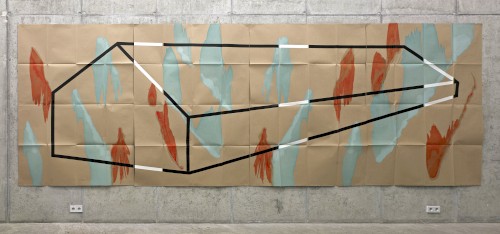
A bed, a house, a car look like global archetypes for the localization of a subject in space and time
Ein Bett, ein Haus, ein Wagen wie globale Archetypen der Verortung eines Subjekts in Raum und Zeit
If we seize that moment’s opportunity and read the mail that has come in, a second movement commences: Dittborn mobilizes historic sources and lets their echoes sweep his panels of fabric, to be refracted by their physical substance and semiotic inventory. Time and again, Chile’s past has been subject to confiscations. The Spanish conquistadores, the Pinochet regime, and the post-despotic culture of amnesia effaced recollections and individuals from the varying narrative templates they imposed on the country and its people. Dittborn uses serigraphy to bring back texts and images from newspapers and books of the past decades, recirculating traces of people who were buffeted and bullied by the processes of history, whose identities and stories were struck from the records or who simply disappeared.
He collects particles of an archive that is not one: faces, bodies and body parts, the accounts of indigenous people, putative criminals, strangulation victims, mummies, inmates of a psychiatric hospital. In the Airmail Paintings, they become part of a post-colonial—or rather, de-colonial and nonlinear—chronicle that is riddled with rifts and gaps. Far from closing these rifts, Dittborn multiplies and enlarges them. Popular caricatures and their humorous abstractions of unfortunate circumstances dismantle the historic contexts and even shift some instances of real tragedy onto the plane of universal buffoonery. Moreover, copies from drawing instruction textbooks cycle through the pictures like a refrain in which a bed, a house, a car look like global archetypes for the localization of a subject in space and time. Only they are empty; the occupants are absent.
The Airmail Paintings envision individual and collective memory as a place that teems with the asynchronous rhythms of concealment and testimony, repression and conjecture, assertion and contradiction, death and coy smiles. These are also the rhythms of Dittborn’s art, which mischievously prevents history from being finalized because it distrusts last words as much as all other fixed states of affairs, including its own. And so these pictures travel onward, perpetuating the fractures, the losses, even the nescience and making them circulate in the world of exhibitions. Conveyed by messengers who knock on the door when an exhibition closes—ours will be no exception—to take away the stories that belong to everyone and no one.
Text: Alexander Koch / Translation: Gerrit Jackson / Photos: Ladislav Zajac, Alexander Koch
Nutzt man diesen Moment und liest die eingetroffene Post, beginnt eine weitere Bewegung: Dittborn mobilisiert historische Quellen und lässt ihre Echos über seine Stoffbahnen laufen und sich an deren Materie und Zeichenbestand brechen. Chiles Vergangenheit wurde immer wieder konfisziert. Spanische Eroberer, das Pinochet-Regime und die nachdespotische Amnesiekultur löschten Erinnerungen und Individuen aus den jeweiligen Erzählschablonen, die sie über das Land und seine Bevölkerung legten. Im Siebdruckverfahren lässt Dittborn Texte und Bilder vergangener Jahrzehnte aus Zeitungen und Büchern wiederkehren. Mit ihnen bringt er Spuren von Menschen neu in Umlauf, die von historischen Prozessen erfasst und herumgeschubst wurden, deren Identitäten und Geschichten man einkassierte oder die schlicht verschwanden.
Er sammelt Partikel eines Archivs, das keines ist: Gesichter, Körper(teile) und Berichte von Indigenen, vermeintlich Kriminellen, Strangulierten, Mumien, Insassen einer Psychiatrie. Auf den Airmail Paintings gehen sie in eine postkoloniale – bzw. dekoloniale und nichtlineare – Chronik ein, die voller Risse und Leerstellen ist. Risse, die Dittborn nicht schließt, sondern multipliziert und vergrößert. Populäre Karikaturen und deren humorige Abstraktion unglücklicher Umstände lösen die historischen Kontexte auf und verschieben manch reale Tragik gar auf die Ebene universeller Possen. Wie ein Refrain durchlaufen die Bilder zudem Kopien aus Lehrbüchern für den Zeichenunterricht, in denen ein Bett, ein Haus, ein Wagen wie globale Archetypen der Verortung eines Subjekts in Raum und Zeit anmuten. Nur sind sie leer, die Insassen fehlen.
Die Airmail Paintings entwerfen das individuelle und kollektive Gedächtnis als einen Ort voller asynchroner Rhythmen von Verbergen und Bezeugen, Verdrängen und Vermuten, Behaupten und Widersprechen, Sterben und Schmunzeln. Das sind auch die Rhythmen von Dittborns Malerei, die schalkhaft Geschichte daran hindert, fertig geschrieben zu werden, weil sie letzten Worten ebenso misstraut wie allen anderen fixierten Zuständen, auch dem eigenen. Deshalb reisen diese Bilder und erhalten dabei die Brüche, die Verluste, auch das Nichtwissen aufrecht und lassen sie im Ausstellungsbetrieb kreisen. Vermittelt durch Boten, die auch am Ende unserer Ausstellung vor der Tür stehen werden, um Geschichten wieder mitzunehmen, die allen gehören und niemandem.
Text: Alexander Koch / Fotos: Ladislav Zajac, Alexander Koch

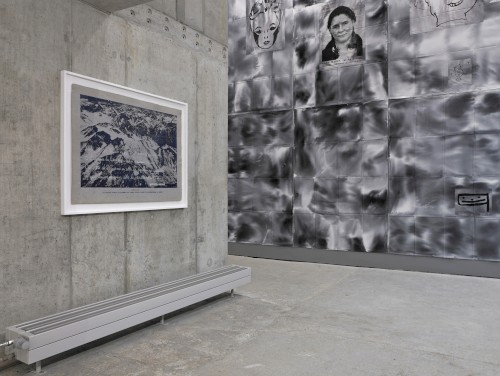
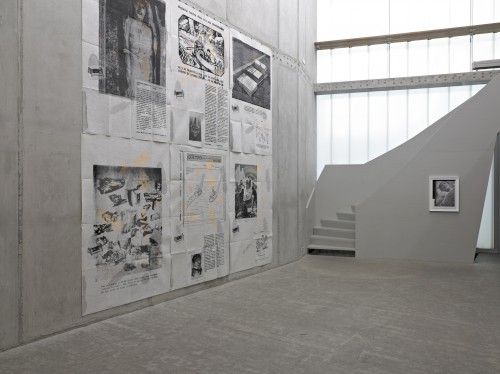
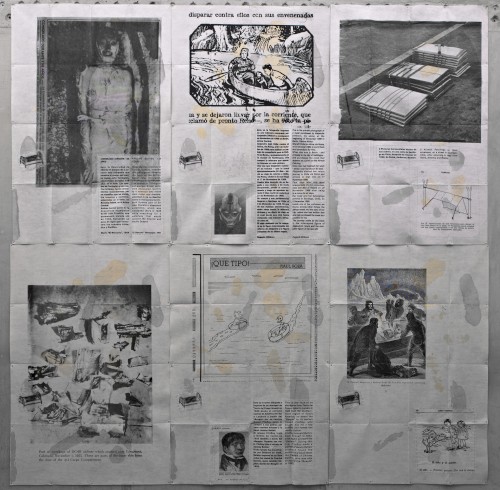
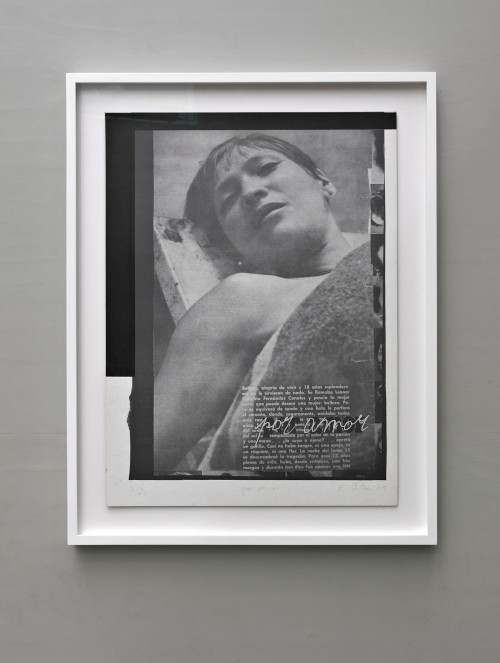
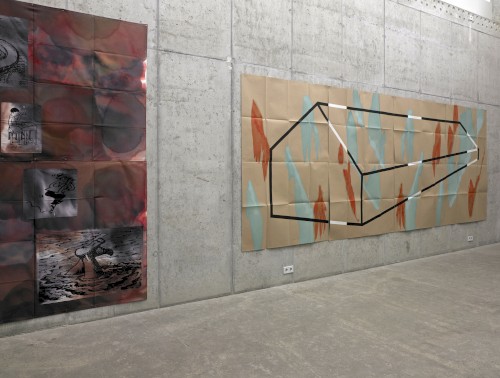
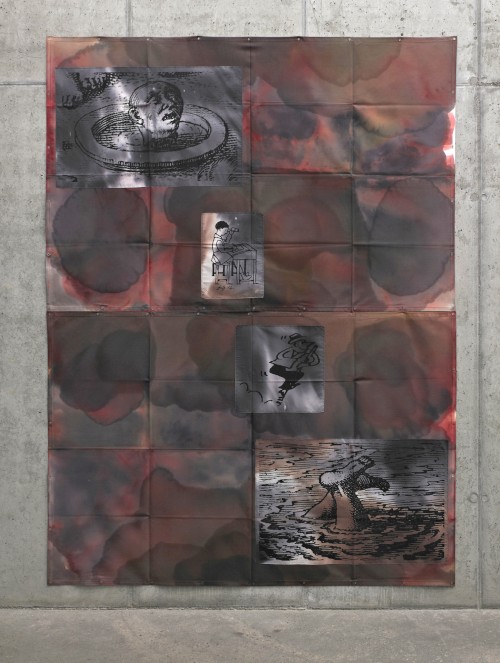
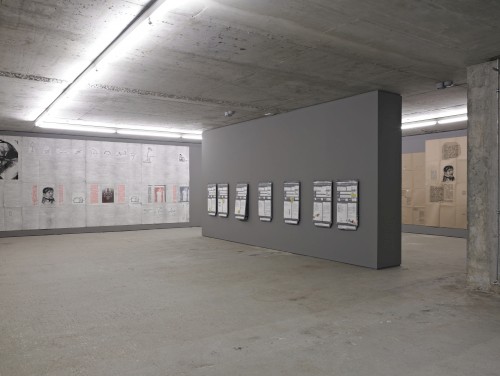

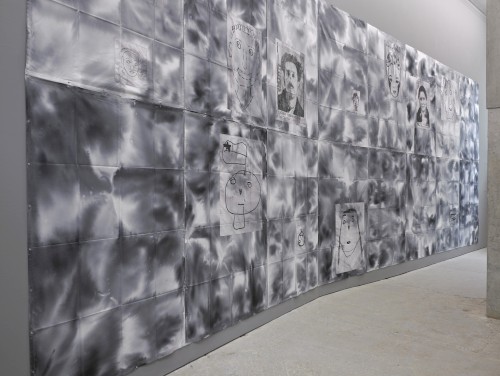
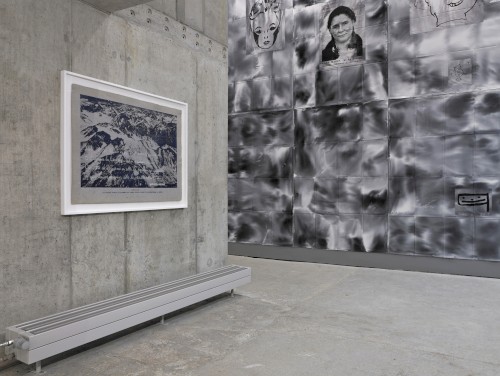
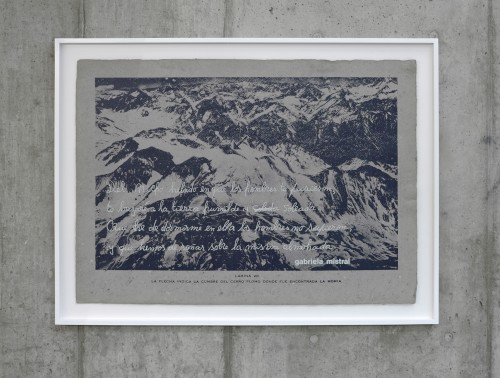
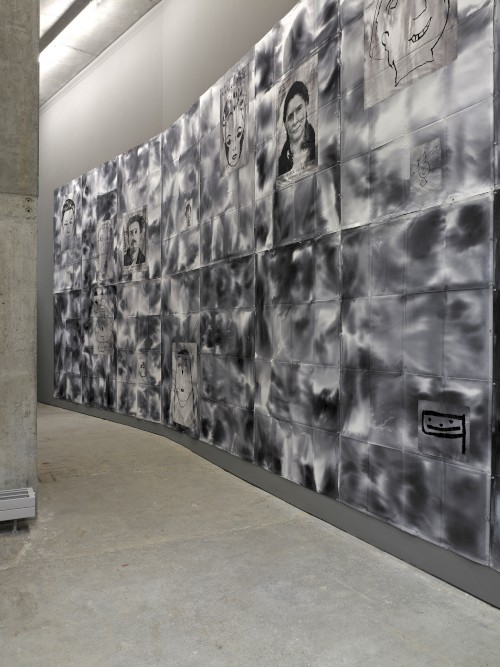

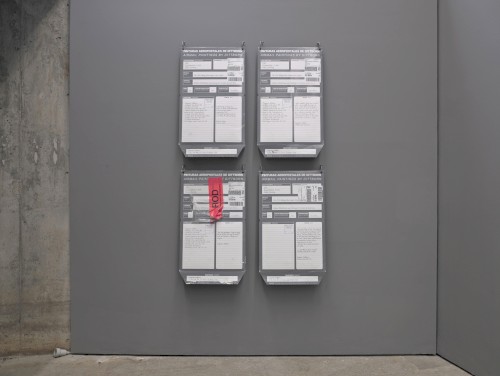
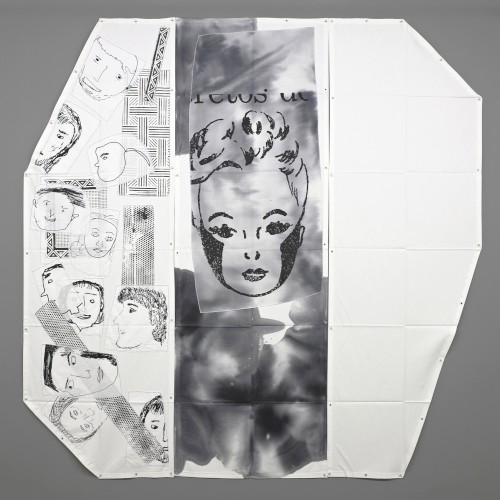
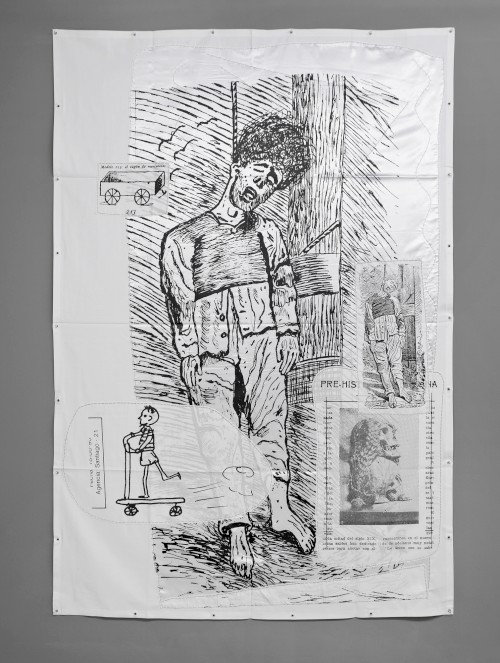
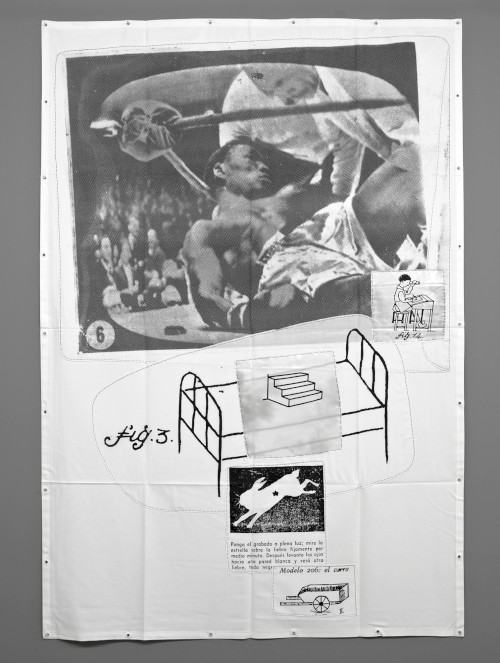
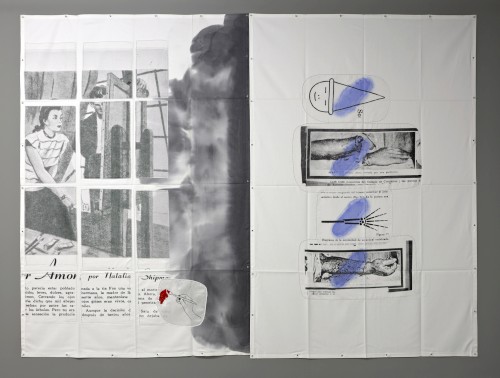
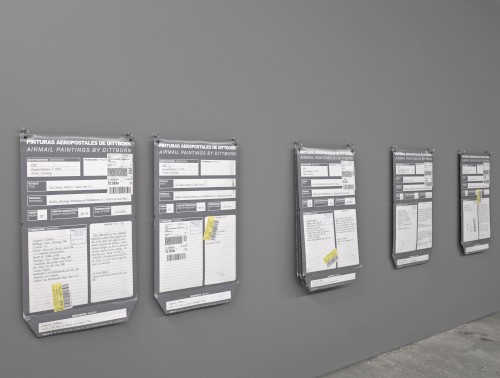
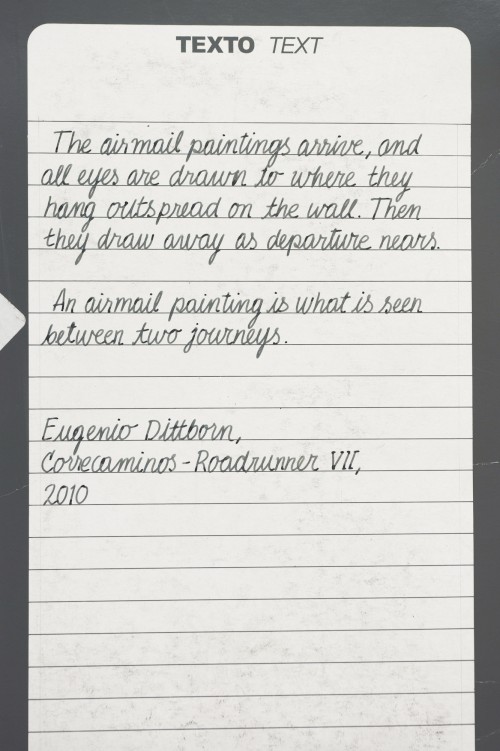
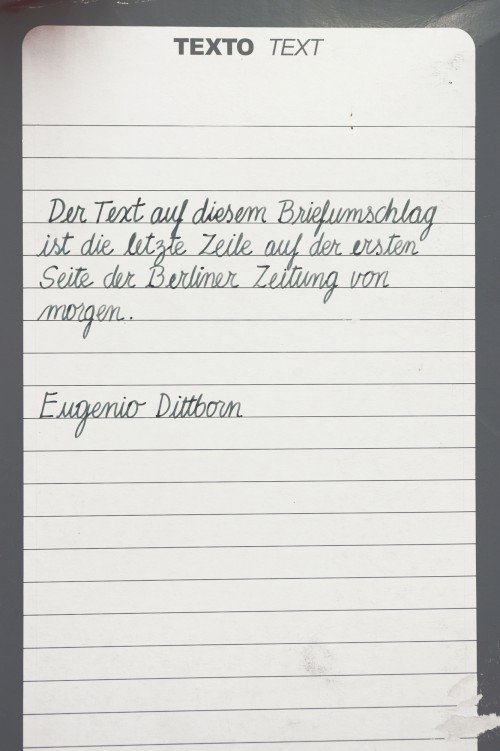
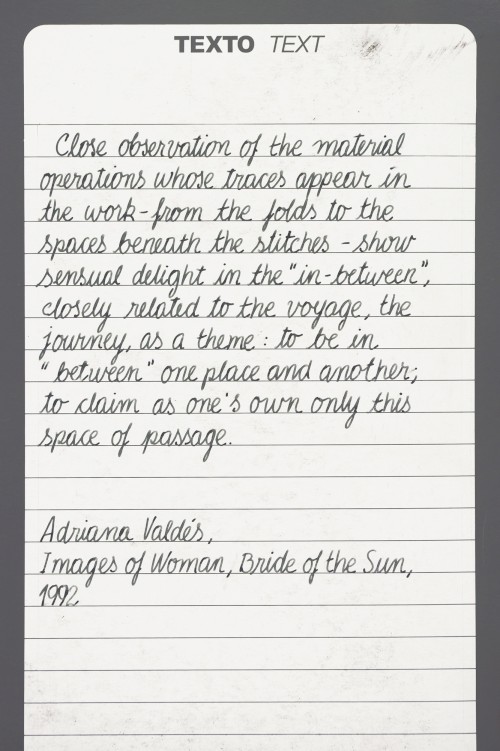
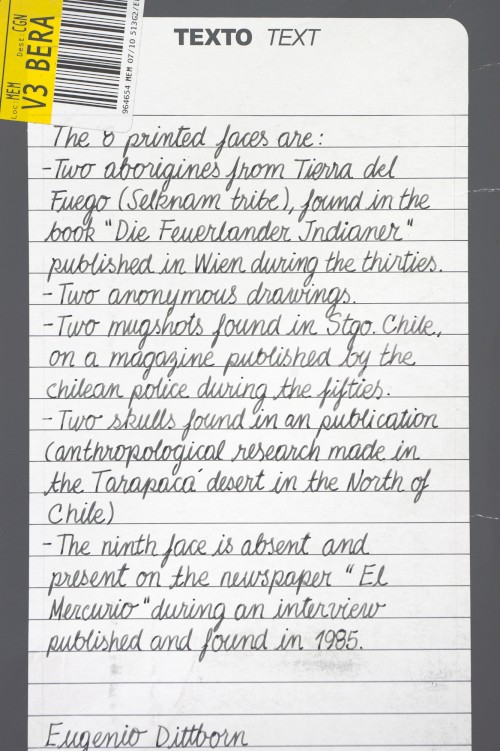
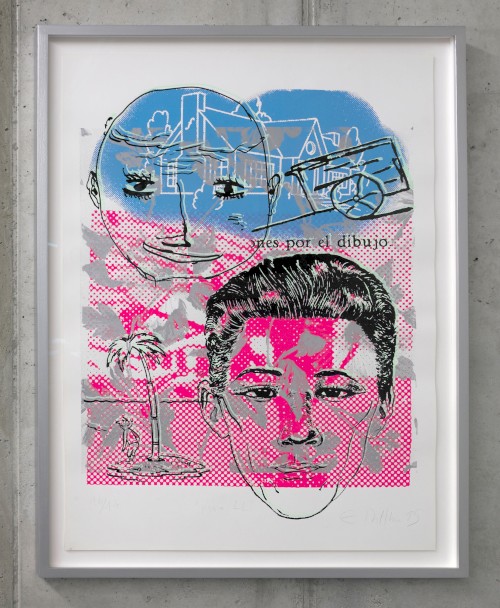

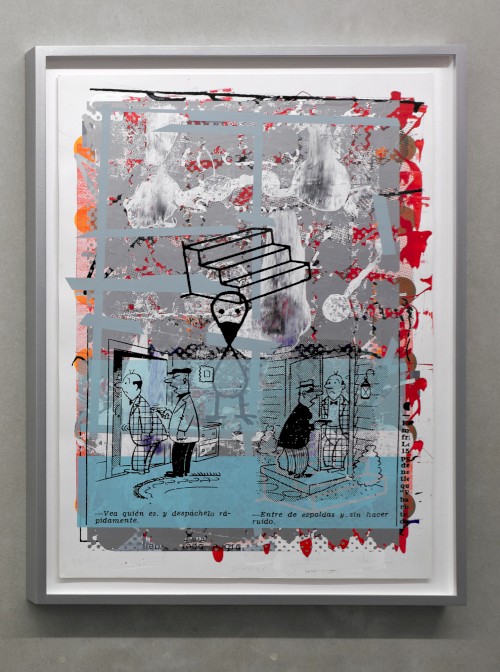

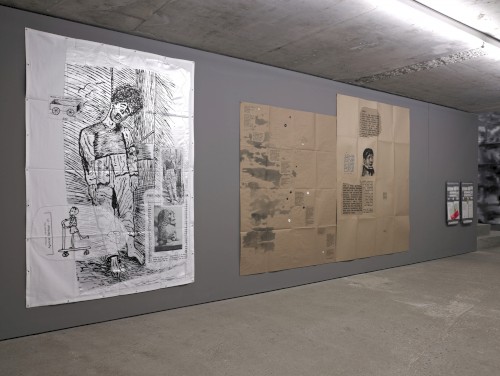
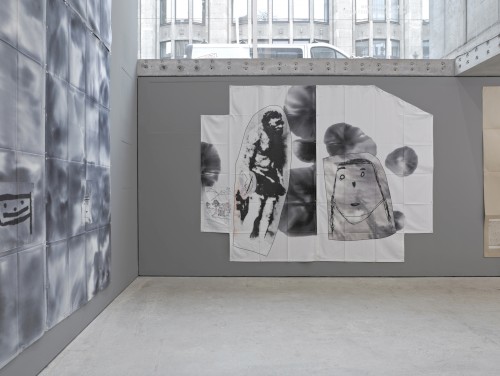

- Current
- Upcoming
- 2026
- 2025
- 2024
- 2023
- 2022
- 2021
- 2020
- 2019
- 2018
- 2017
- 2016
- 2015
- 2014
- 2013
- 2012
- 2011
- 2010
- 2009